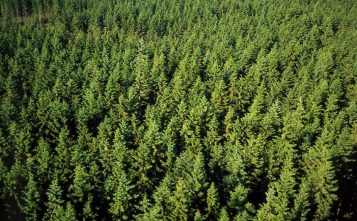The COP26 climate summit in Glasgow focuses on increasing countries' commitments to reduce fossil emissions. What role will the forest and products from the forest play in this?
At COP26, the negotiators come with the knowledge that the countries that have signed the Paris Agreement must do more to reduce fossil emissions. According to the IPCC, the UN's climate panel, emissions need to be reduced by 45 percent by 2030 to be in line with the 1.5-degree target. According to a new UN report, current commitments would not lead to reduced emissions but, on the contrary, to an increase of 16 percent.
In an interview with Swedish Radio , Åsa Persson, head of research and vice president at the Stockholm Environment Institute, draws the picture: About 40 countries have not updated their climate plans for COP26, such as large emitters such as India and China. Other countries still have the same ambition as before and some have lowered their ambition such as Brazil and China. At the same time, there are bright spots. More and more countries have targets for renewable energy and about 70 countries now have net-zero targets by 2050. If this holds, they would land at 2.2 degrees. So in the long run, things are looking better, says Åsa Persson.
In addition to the 70 countries Åsa Persson mentions, 180 of the world's major cities and 600 of the world's 2000 largest companies have also adopted net-zero targets.
The role of the forest in the climate negotiations
The Paris Agreement, when adopted in 2015, was perceived as a recognition of the important role of forests and forest products in reducing fossil emissions. All countries were urged to support sustainable forestry and work to reduce deforestation. But a warning finger was also raised. The forest industries' then head of business policy, Mårten Larsson, expressed in an interview a concern that countries would be tempted to set aside forests as coal stocks to compensate for continued fossil emissions in other sectors of society. Six years later, this is also included in the discussions, not least among actors with net-zero ambitions. The carbon stock in forests and trees is proposed to increase to compensate for continued fossil emissions. This can make it more difficult to get a hearing for the forest to be used and used, in order to reduce fossil dependence.
Few industries, like the forestry industry, can combine financial success with large-scale climate benefits through their products. This needs more attention in the climate negotiations.






Leave a Reply